The age-old traveler’s dilemma in northern Vietnam Ha Giang or Sapa? Both destinations promise breathtaking landscapes and authentic cultural experiences, yet they offer distinctly different journeys. At Phieu Travel, we’ve guided countless adventurers through these spectacular regions, witnessing firsthand how each location captures hearts in unique ways. Some travelers seek the rugged, untamed beauty of Ha Giang’s limestone peaks and winding roads, while others are drawn to Sapa’s terraced fields and more established tourism infrastructure. This comprehensive comparison will help you decide which northern Vietnam gem aligns with your travel style, expectations, and sense of adventure.
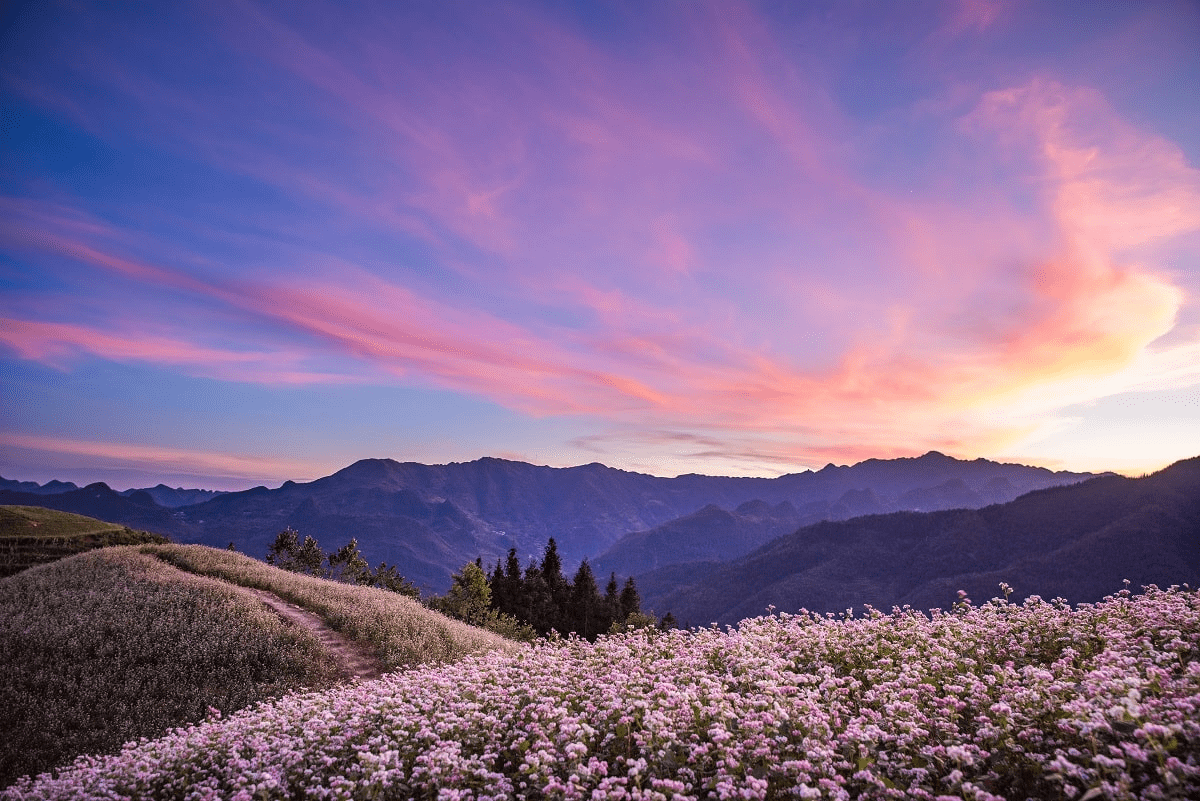
1. Quick Comparison: Ha Giang Loop vs Sapa
Northern Vietnam’s crown jewels offer contrasting experiences for travelers seeking mountain adventures beyond the bustling streets of Hanoi. While both destinations showcase stunning landscapes and ethnic minority cultures, they appeal to different types of travelers based on comfort preferences, time constraints, and desired experiences.
Sapa, established as a French hill station in 1922, has evolved into northern Vietnam’s premier trekking destination. Located in Lao Cai province about 320km northwest of Hanoi, this mountain town is renowned for its cascading rice terraces, the towering Fansipan Mountain (Indochina’s highest peak), and vibrant ethnic minority communities. The region has developed significant tourism infrastructure over decades, making it more accessible for travelers seeking comfortable accommodations alongside cultural experiences.
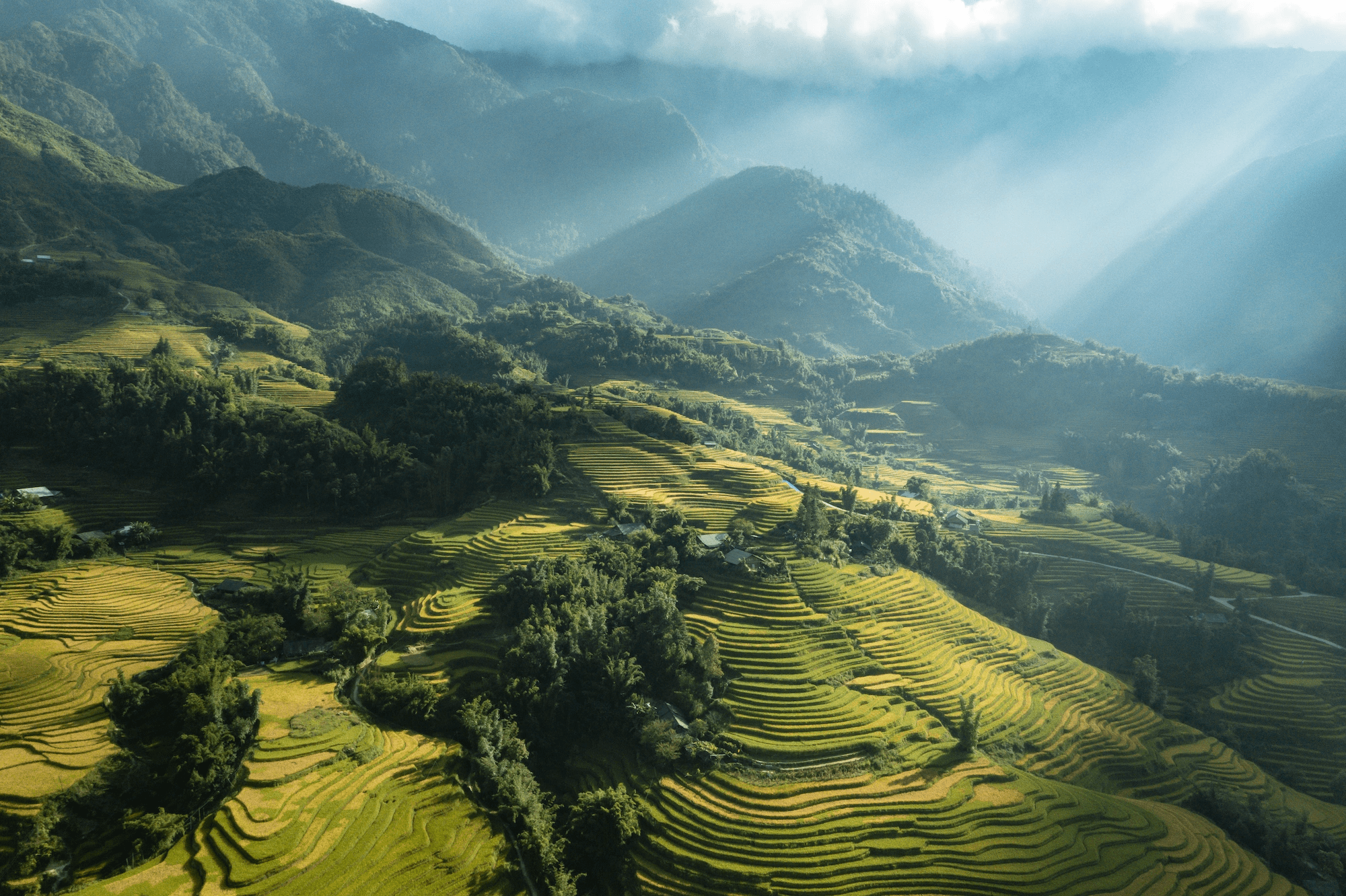
Ha Giang, by contrast, represents Vietnam’s final frontier for adventure tourism. This remote province sharing a border with China features the UNESCO-recognized Dong Van Karst Plateau Geopark with its dramatic limestone formations, deep valleys, and the legendary Ma Pi Leng Pass. The Ha Giang Loop a 350km motorcycle circuit has become an iconic journey for adventurous travelers. The region remains considerably less developed than Sapa, offering a more authentic glimpse into rural highland life but requiring greater preparation and a spirit of adventure.
At Phieu Travel, we’ve watched Ha Giang transform from a hidden secret to a bucket-list destination, while Sapa has continued refining its balance between accessibility and authenticity. Understanding what each place is truly known for helps set realistic expectations for your northern Vietnam adventure.

Best places to visit in Northern Vietnam a complete 2025 guide
2. Who Should Visit Ha Giang Loop?
The Ha Giang Loop attracts a specific type of traveler who values authentic experiences over comfort. This remote northern region offers something special for those willing to venture beyond conventional tourism paths. Its rugged beauty rewards the adventurous with memories that last a lifetime.
2.1 Adventure Seekers
If your idea of a perfect vacation involves embracing uncertainty and chasing adrenaline, the Ha Giang Loop won’t disappoint. The journey takes you along narrow mountain roads that cling to cliffside edges. Around each bend, a new vista opens up that seems impossible to top until you reach the next one. Imagine rounding a corner on Ma Pi Leng Pass and gasping at the emerald Nho Que River winding through the deep canyon below.
The Loop challenges travelers in the best possible way. Weather changes rapidly in the mountains, adding an element of unpredictability to each day. Local homestays provide basic but authentic accommodations where you’ll sleep on mattresses under mosquito nets. You might find yourself sharing rice wine with Hmong families or joining impromptu celebrations in remote villages.
2.2 Motorbike Enthusiasts
For those who love riding, the Ha Giang Loop represents the ultimate motorbiking experience in Southeast Asia. The approximately 350-kilometer circuit weaves through some of Vietnam’s most spectacular scenery. Negotiating hairpin turns while limestone giants tower overhead creates an unforgettable sensation of freedom and accomplishment.
The road conditions vary dramatically from recently paved sections to rough patches that demand full attention. Travelers on this journey will encounter everything from perfect asphalt to gravel stretches that tested their riding skills. Each day brought new challenges: morning fog limiting visibility, afternoon rain making roads slippery, or local trucks navigating tight passes. These challenges make completing the Loop all the more rewarding.
2.3 Those Seeking Off-the-Beaten-Path Experiences
Ha Giang remains one of Vietnam’s least commercialized regions despite growing popularity. Traditional cultures of the Hmong, Dao, Tay, and other ethnic groups continue with minimal outside influence. Villages like Lung Cu and Dong Van maintain lifestyles that have changed little over generations. When you visit a local market, you’ll see women in vibrant traditional clothing gathered to trade goods just as they had for centuries.
Cultural authenticity permeates every aspect of a Ha Giang journey. Roadside restaurants serve dishes you won’t find in guidebooks. Local festivals happen without tourist schedules in mind. During a spring trip, it’s possible to stumble upon a festival where men competed in traditional games while elders shared ancient stories. These spontaneous encounters create the magic of Ha Giang.
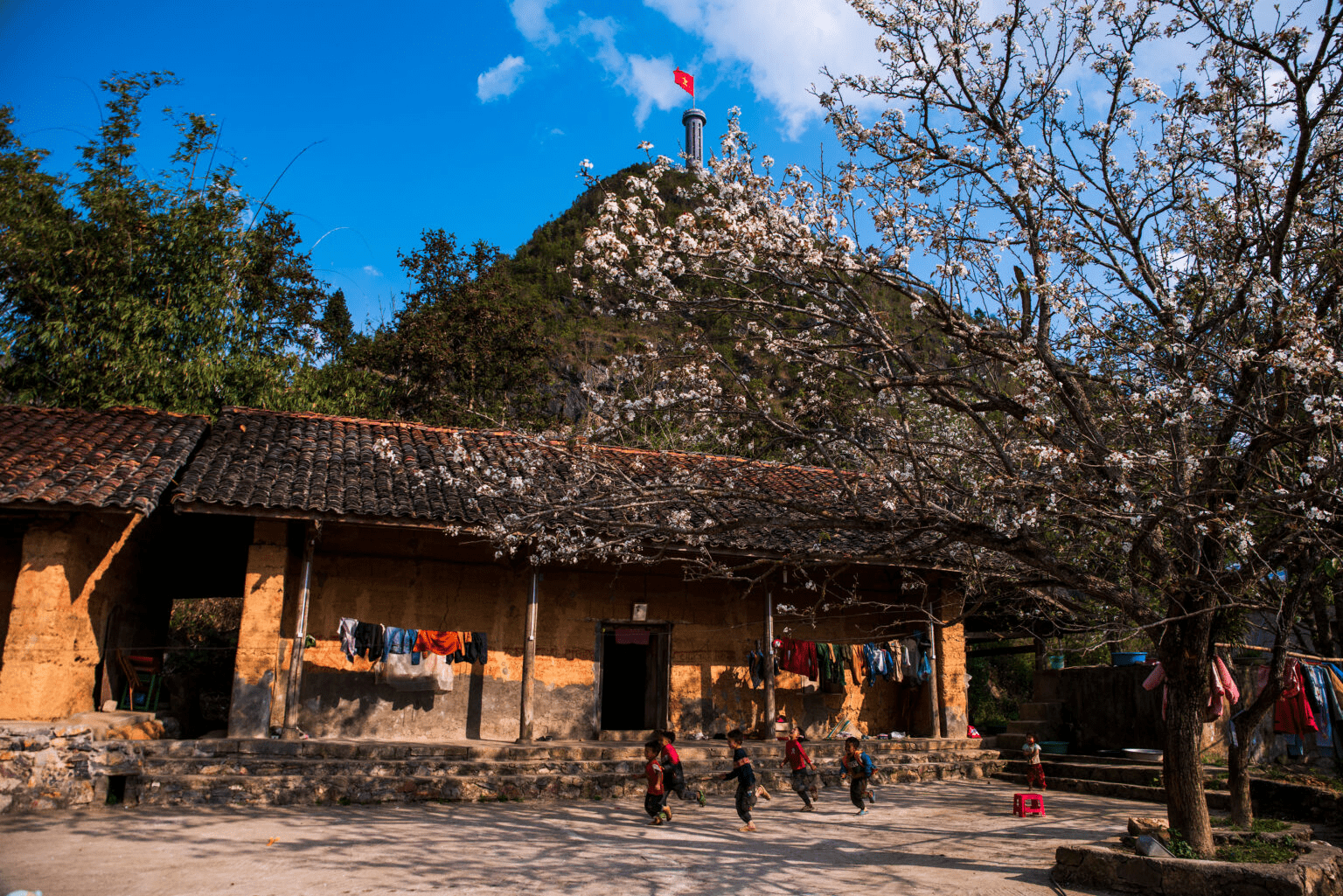
The Ultimate Ha Giang Loop Guide (2025): Itinerary, Map & Tips
3. Who Should Choose Sapa?
Sapa appeals to travelers seeking beautiful landscapes without venturing too far from their comfort zone. This established destination in northern Vietnam combines stunning natural beauty with comfortable amenities. Its accessibility makes it perfect for certain types of visitors.
3.1 Trekking Lovers
For dedicated hikers, Sapa offers some of Vietnam’s most beautiful trekking routes through terraced rice fields and ethnic minority villages. Well-marked trails range from gentle half-day walks to challenging multi-day treks. Local guides from ethnic minorities like the Black Hmong and Red Dao share intimate knowledge of the mountains and their communities.
Travelers particularly enjoy the Muong Hoa Valley trek, where stone paths wind through villages and alongside streams. The physical challenge felt rewarding without being overwhelming. Along the way, local children practiced English with travelers while women in traditional indigo clothing worked in the fields. The infrastructure supporting treks in Sapa makes experiences accessible even for those with limited hiking experience.
3.2 Culture and Comfort Seekers
Sapa town offers amenities that simply don’t exist in Ha Giang. Hotels with heating, hot showers, and English-speaking staff provide comfortable bases for exploring. Cafes serve familiar Western dishes alongside Vietnamese specialties. Massage services help soothe muscles after trekking days. Travelers can appreciate returning to a warm room with mountain views after days spent exploring the countryside.
Cultural experiences in Sapa come with built-in accessibility. The town hosts handicraft markets where visitors can purchase authentic textiles. Cooking classes teach traditional Hmong recipes using local ingredients. Cultural shows demonstrate traditional dances and music. Though some aspects feel designed for tourists, they nonetheless offer valuable windows into local cultures without language barriers or logistical challenges.
3.3 Best Season for Rice Terraces
Sapa’s famous terraced rice fields change dramatically with the seasons, creating distinct visitor experiences throughout the year. September brings golden harvest colors when terraces glow in late afternoon sunlight. May and June showcase newly planted fields with water-filled terraces reflecting the sky like thousands of mirrors. In late September, the hills appear draped in gold as farmers harvest their crops by hand.
The seasonal beauty extends beyond rice cultivation. Spring brings peach and plum blossoms that dot hillsides with pink and white. Winter occasionally delivers rare snowfall that transforms the landscape into a magical wonderland. Even during rainy summer months, mist wrapping around mountains creates ethereal scenes perfect for photography enthusiasts.

4. Getting There and Around (Hanoi-Ha Giang-Sapa)
Both destinations require some planning to reach from Hanoi, though with significantly different logistics. Understanding transportation options helps ensure a smooth journey. The right approach depends on your comfort level, budget, and available time.
4.1 Transport Options (Bus, Train, Tours)
Reaching Sapa has become straightforward in recent years. Overnight trains from Hanoi to Lao Cai offer comfortable sleeper cabins followed by a short shuttle to Sapa town. Modern expressways have reduced bus journey times to about 5-6 hours on sleek limousine buses with reclining seats. The gentle rocking motion of the overnight train provides a surprisingly restful sleep before waking to misty mountain views.
Ha Giang presents a more challenging journey. Direct buses from Hanoi take 6-7 hours on winding mountain roads. No train option exists. Upon arrival in Ha Giang city, most travelers arrange motorbike rentals to begin their Loop adventure. For those without riding experience, hiring local drivers as guides (known as “Easy Riders”) provides an alternative way to experience the Loop from the back of a bike.
Tour options exist for both destinations. Sapa offers everything from budget group tours to luxury private experiences. Ha Giang tours typically include a driver/guide who handles navigation while you enjoy the scenery. The local expertise of a travel company is valuable for arranging authentic homestays and cultural experiences in both regions.
4.2 How to Navigate with Limited Motorbike Experience
For those with limited motorbike experience, tackling the Ha Giang Loop requires careful consideration. The roads demand respect with their sharp turns and occasional rough patches. However, many travelers successfully complete the Loop despite limited prior riding experience. Spending a day practicing in Ha Giang city before starting the full journey is recommended.
Several alternatives exist for those uncomfortable with driving themselves. Easy Riders provide a safe way to experience the Loop while learning about the region from knowledgeable locals. Small group tours in modified vehicles navigate the same routes. Some travelers even hire private cars, though this limits flexibility and raises costs significantly.

Ha Giang weather by month complete local guide for travelers
5. Safety and Practical Tips for Solo Travelers
Solo travel in northern Vietnam presents unique considerations whether choosing Sapa or Ha Giang. Being prepared enhances both safety and enjoyment. Weather, language barriers, and practical matters require thoughtful planning.
Weather conditions change rapidly in mountainous regions, making layered clothing essential regardless of season. In Ha Giang, mornings can begin with jacket weather, before warming to T-shirt conditions by midday. Travelers should pack rain gear for any time of year, as mountain weather can change quickly. Given that accommodations are often basic, a light sleeping bag liner can provide extra comfort and peace of mind.
Communication presents varying challenges between the destinations. Sapa’s tourism industry means finding English speakers proves relatively easy. Ha Giang’s remote areas may require translation apps or basic Vietnamese phrases. Learning simple greetings often opens doors to warm hospitality in both regions. Downloading offline maps and translators before departure ensures they’re available when needed.
Solo female travelers report feeling safe in both destinations, though standard precautions remain wise. Letting accommodation hosts know your daily plans creates safety networks. Avoiding late-night travel, particularly on motorbikes, reduces risks significantly. Locals in both regions demonstrate remarkable hospitality toward solo travelers, often checking that you’ve found your way safely.
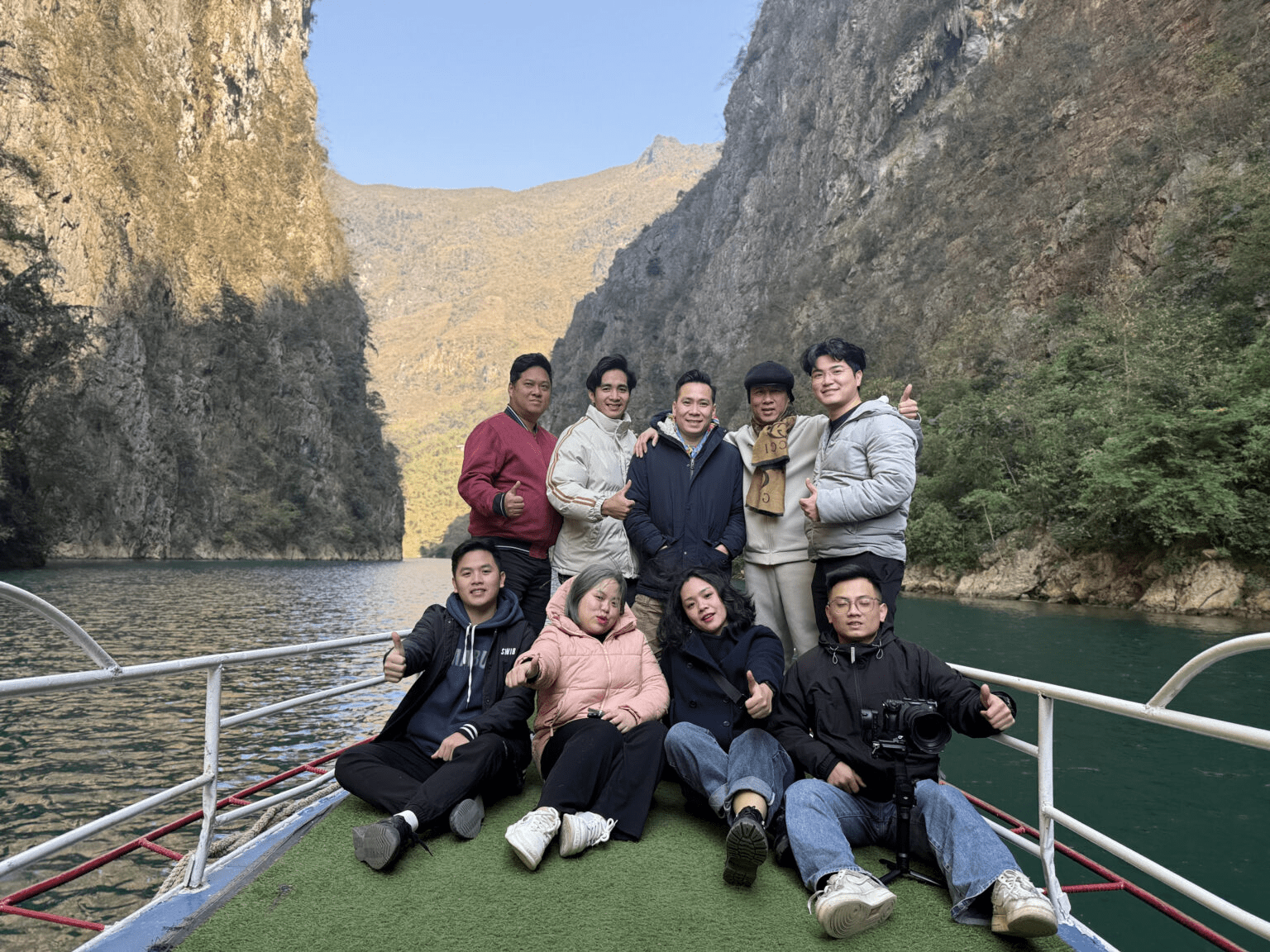
6. Essential Activities & Itineraries
Both destinations offer distinctive experiences that showcase northern Vietnam’s beauty. Planning the right activities makes your journey memorable whether choosing Ha Giang or Sapa. Each region deserves at least three days to appreciate fully.
6.1 Ha Giang Loop Top Routes and Sights
The classic Ha Giang Loop follows a counter-clockwise route from Ha Giang city through Dong Van, Meo Vac, and back. Most travelers complete this journey in 3-4 days, though extending to 5 allows deeper exploration of villages along the way. The undisputed highlight, Ma Pi Leng Pass, delivers breathtaking views of the Nho Que River carving through limestone mountains.
Other must-visit spots include the Lung Cu Flag Tower marking Vietnam’s northernmost point, the Hmong King’s Palace showcasing unique cultural heritage, and vibrant local markets happening on rotation throughout the region. Don’t miss the Heaven’s Gate viewpoint near Quan Ba or the stunning rock plateau of Dong Van. Travelers will particularly treasure memories of sunrise at Ma Pi Leng, when first light painted the mountains in golden hues while mist still clung to the valley below.
For those with additional time, extending the journey to include Du Gia offers rewarding waterfall hikes and some of the region’s most beautiful rice terraces. Local homestays in this area provide authentic cultural experiences less influenced by tourism. It’s possible to learn traditional weaving techniques from a family or share home-cooked meals around their fire, creating truly memorable connections.
6.2 Sapa Trekking and Fansipan
Sapa’s primary attraction remains its spectacular trekking routes through terraced landscapes and ethnic minority villages. Popular options include day hikes to Cat Cat village or longer routes to Ta Phin and Y Linh Ho. Multi-day treks with homestay accommodations allow immersion in local communities. The valley between Lao Chai and Ta Van offers particularly photogenic scenery accessible even to casual hikers.
Mount Fansipan, Vietnam’s highest peak at 3,143 meters, presents a significant challenge for ambitious trekkers. Traditional two-day climbing expeditions require good fitness and preparation. The modern cable car alternative reaches the summit in 20 minutes, though purists might consider this cheating. When traveler visited Fansipan, clouds parted briefly at the summit to reveal spectacular views across the Hoang Lien Son range extending into the distance.
Beyond trekking, Sapa offers additional activities worth considering. The Bac Ha Sunday Market, though requiring a day trip from Sapa, showcases the region’s cultural diversity with ethnic groups gathering in traditional attire. Muong Hoa Valley’s ancient rock carvings provide historical perspective. For relaxation after active days, several hot springs in the region offer soothing respite for tired muscles.

7. Authentic Culture: Ethnic Minorities in Both Regions
Northern Vietnam’s cultural landscape features diverse ethnic minority communities maintaining distinct traditions. Both Ha Giang and Sapa offer opportunities to experience these living cultures. Respectful interaction creates meaningful connections that often become trip highlights.
Ha Giang province hosts 22 ethnic groups including the Hmong, Dao, Tay, Nung, and Lo Lo peoples. Each maintains unique clothing styles, languages, agricultural practices, and spiritual beliefs. Markets like those in Dong Van and Meo Vac function primarily for locals rather than tourists. Visitors to a local market can observe women bartering for seeds and tools while men traded livestock, all wearing traditional clothing as everyday attire rather than for show.
Sapa’s cultural landscape features predominantly Hmong and Dao communities who have adapted to tourism while maintaining core traditions. Though commercial elements exist, genuine cultural exchanges remain possible, particularly in more remote villages. Homestay experiences offer opportunities to participate in daily activities, from farming to cooking. They also provide a chance to help a Hmong family harvest rice before learning to prepare traditional dishes using locally gathered ingredients.
Responsible cultural engagement matters in both regions. Asking before taking photographs shows respect. Purchasing handicrafts directly from artisans supports traditional skills. Learning a few words in local languages demonstrates interest in cultures beyond surface observations. These small efforts create more meaningful connections and support communities maintaining traditional ways of life.
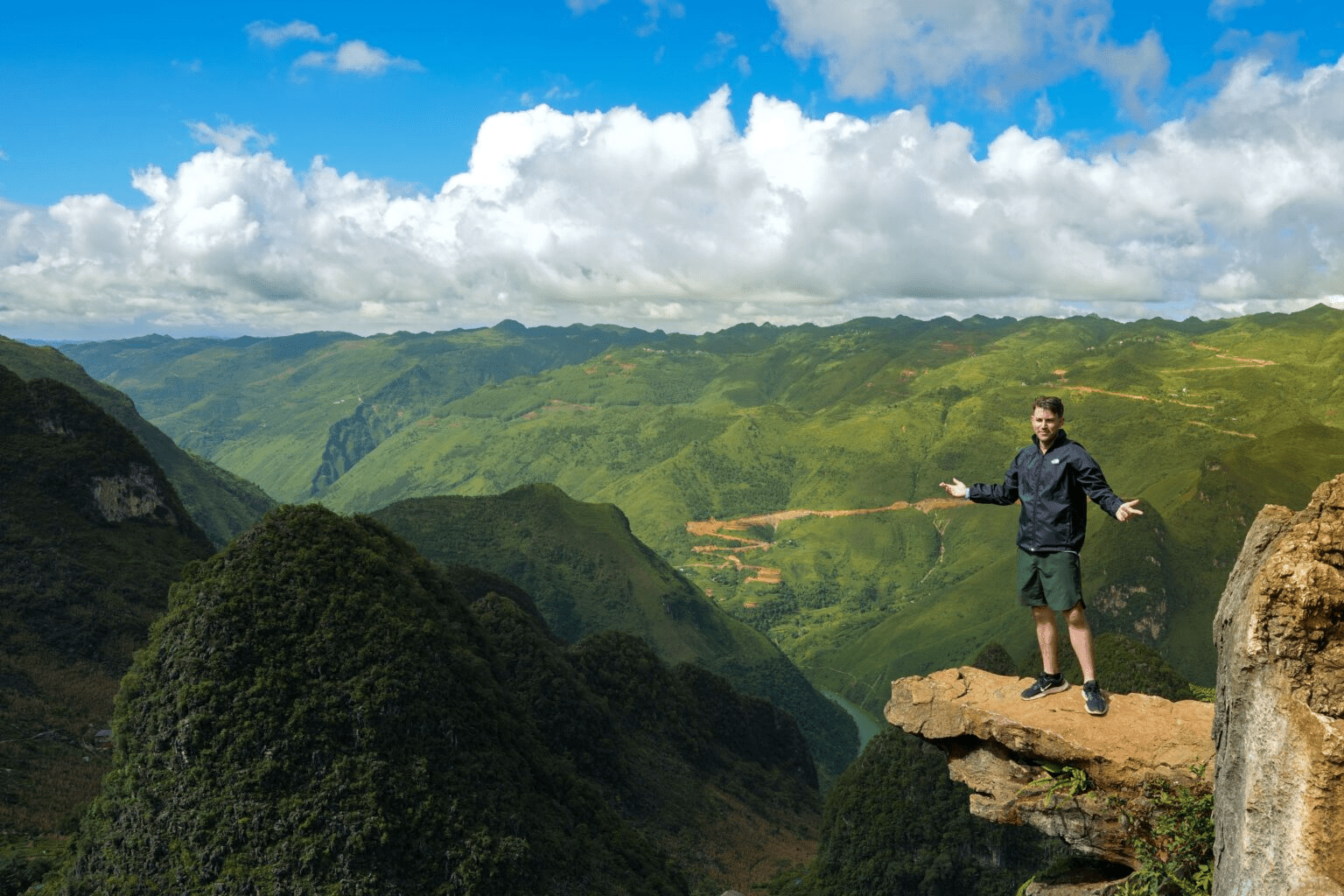
8. FAQs: Making Your Decision
When faced with the choice between these two captivating destinations in northern Vietnam, travelers often have a lot of questions. Phieu Travel has compiled some of the most common inquiries to help you make an informed decision and prepare for your trip.
8.1 Is the Ha Giang Loop safe for solo travelers with little motorbike experience?
The Ha Giang Loop presents challenges for inexperienced riders but remains accessible with proper preparation. Consider practicing in Ha Giang city before starting the Loop. Alternatively, hiring an Easy Rider guide provides safety while still experiencing the journey. Weather significantly affects road conditions, so checking forecasts and avoiding rainy seasons reduces risks.
8.2 What are the main differences in landscape and culture between Sapa and Ha Giang?
Sapa features terraced rice fields, forested mountains, and valleys with developed tourism infrastructure. Ha Giang showcases dramatic limestone karsts, winding mountain roads, and plateaus with minimal development. Culturally, Sapa’s ethnic communities have adapted to tourism while maintaining traditions. Ha Giang’s communities live largely traditional lifestyles with less outside influence, resulting in more authentic but less accessible cultural experiences.
8.3 How do I get from Hanoi to Sapa or Ha Giang?
Reaching Sapa from Hanoi takes 5-6 hours by limousine bus or 8 hours by overnight train to Lao Cai followed by a 1-hour shuttle. Ha Giang requires a 6-7 hour bus journey with no train option available. Both destinations have multiple daily departures from Hanoi, though Sapa offers more comfortable transportation options overall.
8.4 Which destination is less touristy—Sapa or Ha Giang?
Ha Giang remains significantly less touristy than Sapa, though visitor numbers have increased in recent years. Sapa receives mass tourism with developed infrastructure catering to international visitors. Ha Giang’s tourism remains relatively nascent with fewer English speakers and more authentic local interactions. The difference becomes most apparent in accommodations, food options, and the presence of souvenir vendors.
8.5 What are the best activities for solo travelers in Sapa and Ha Giang?
Solo travelers in Ha Giang thrive on motorbiking the Loop, photographing dramatic landscapes, exploring local markets, and connecting with ethnic minority communities through homestays. In Sapa, guided treks with local guides, Fansipan summit journeys, cooking classes, and visiting handicraft villages offer rewarding solo experiences with opportunities to meet other travelers.
8.6 When is the best season to visit each?
For Ha Giang, September through November offers ideal weather with clear skies, moderate temperatures, and harvested rice fields. October brings buckwheat flowers in purple bloom. For Sapa, September-November showcases golden rice terraces and comfortable hiking weather. February-April brings beautiful spring blossoms but occasional fog. Both destinations become challenging during summer rainy season (June-August) when roads can become hazardous.
8.7 Where can I get an authentic ethnic minority experience?
For authentic cultural experiences in Ha Giang, visit the Sunday markets in Dong Van or Meo Vac, stay in homestays in remote villages like Lung Cu or Du Gia, and time your visit to coincide with local festivals. In Sapa, trek to more distant villages like Ban Ho or Nam Cang, arrange homestays in Ta Van rather than staying in commercial operations, and visit during weekdays when day-trippers from Hanoi are fewer.
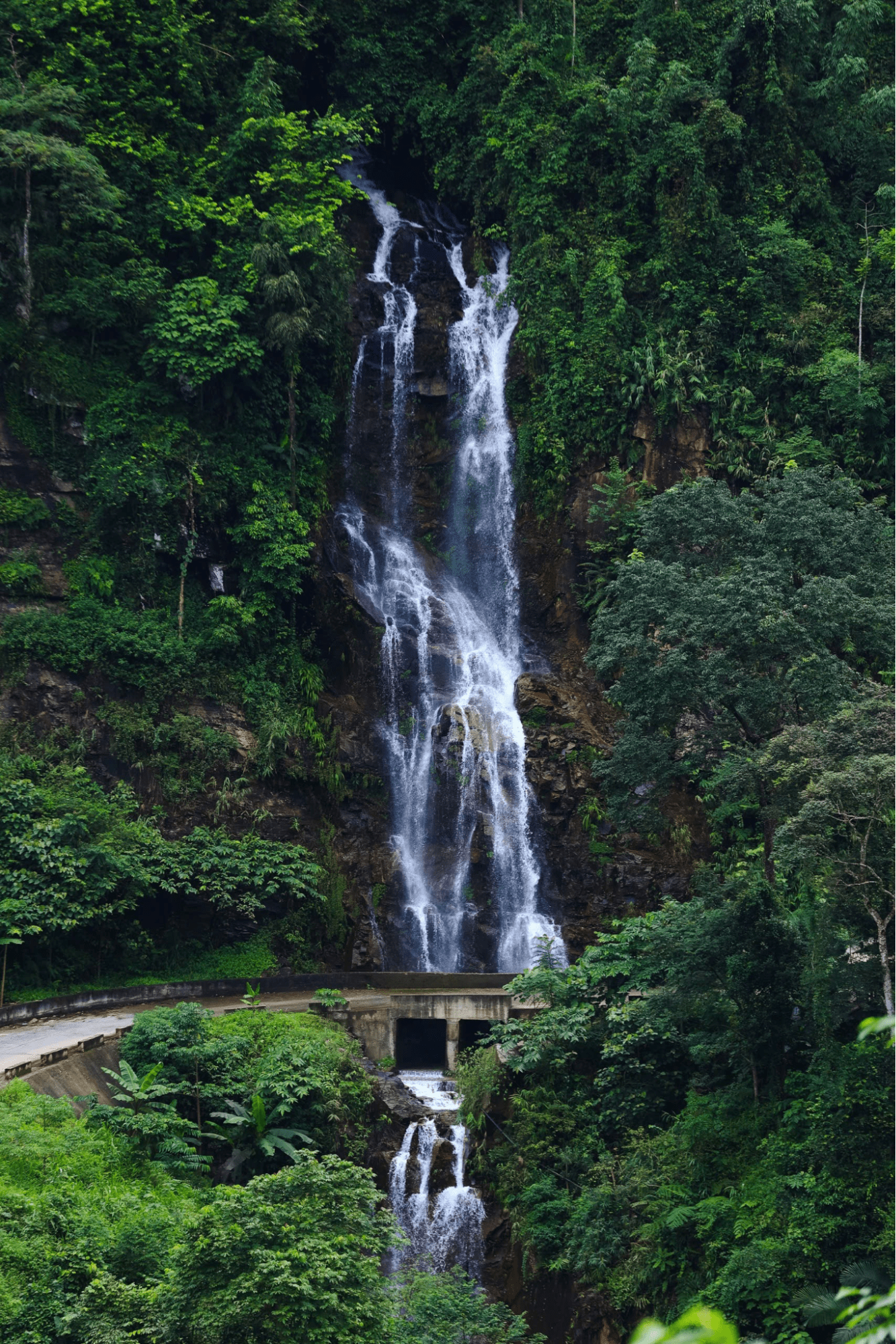
Choosing between the Ha Giang Loop vs Sapa ultimately depends on your travel priorities. Ha Giang offers unparalleled scenic beauty, authentic cultural experiences, and adventure with minimal tourism development. Sapa provides accessibility, comfort, beautiful trekking, and cultural experiences with established infrastructure. Both destinations showcase northern Vietnam’s spectacular landscapes and rich ethnic diversity.
As we reflect on the countless journeys made in both regions, we’re grateful for the distinct memories each destination creates for our travelers. Sapa’s terraced fields catch morning light in ways that remain etched in the mind. Ha Giang’s limestone giants standing silent against blue skies represent nature at its most majestic. Both places offered windows into cultures maintaining ancient traditions in rapidly changing times.
Whatever you choose, northern Vietnam rewards travelers with breathtaking natural beauty and cultural richness. At Phieutravel.com, we believe both Ha Giang Loop vs Sapa deserve places on any Vietnam itinerary. The real question might not be which to visit, but rather how to experience both during your journey through this remarkable country.
Read more:
- Exploring Mu Cang Chai – Ha Giang: Where to Go, What to Eat, and Where to Stay
- Best places to visit in Northern Vietnam a complete 2025 guide
- Ha Giang Loop 4 Days 3 Nights: The Ultimate Journey
- How to get a visa for Vietnam complete 2025 guide

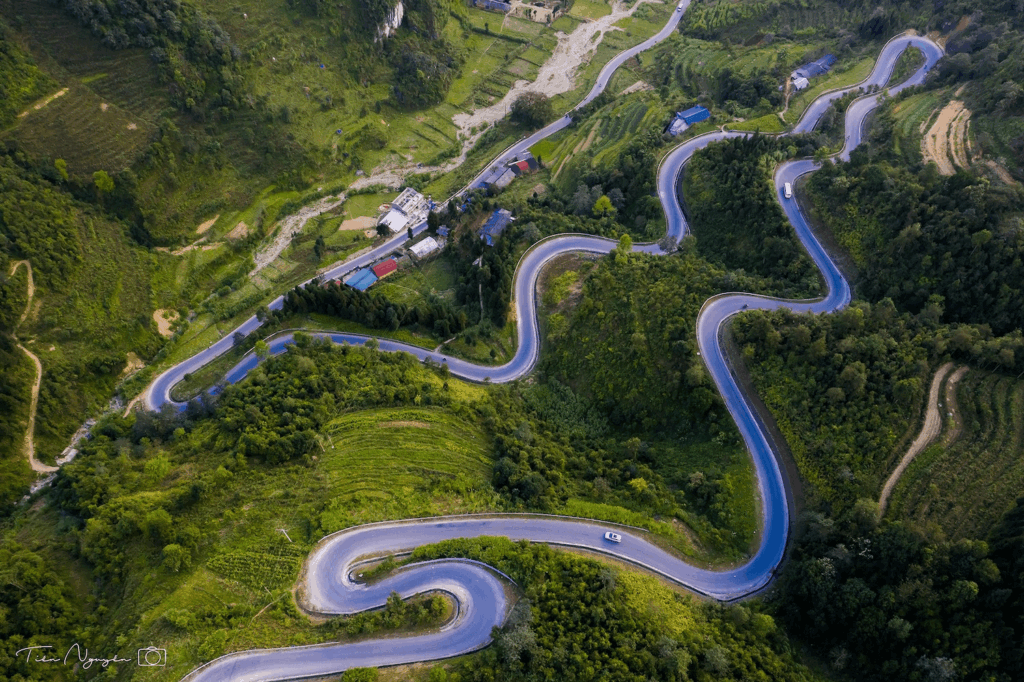
You Might Also Like
Ha Giang Weather in September: Complete Guide for Travelers
Exploring the magnificent Ha Giang Loop in September offers travelers a perfect balance of favorable[...]
Quan Ba Twin Mountains: Ha Giang’s Iconic Fairy Hills and Complete Travel Guide
The mystical Quan Ba Twin Mountains rise from the emerald valleys of Ha Giang like[...]
Vuong family mansion: the architectural marvel and cultural legacy of Ha Giang
Deep in Vietnam’s northern highlands, where mist-shrouded mountains meet terraced rice fields, stands a testament[...]
Ha Giang Loop Safety Tips: How to Ride Securely in Vietnam’s Northern Mountains
The Ha Giang Loop, with its winding mountain roads and breathtaking landscapes, offers one of[...]
The Ultimate Guide to the M-Shaped Curve on Ha Giang Loop
Vietnam’s remote northern province of Ha Giang hides a natural wonder that has captivated adventurous[...]
Most Beautiful Places to Visit in Vietnam: Essential Destinations and Insider Tips
Vietnam captivates travelers with its stunning landscapes, rich cultural heritage, and warm hospitality. From mist-shrouded[...]
Beyond the Beaten Path: Discovering Ha Giang Province in Northeast Vietnam
Ha Giang Province in Northeast Vietnam stands as one of the country’s last frontiers for[...]
Rainy season in Ha Giang: what to expect, when to go, and travel tips
Vietnam’s northern frontier reveals a different face during the rainy season, transforming Ha Giang’s limestone[...]